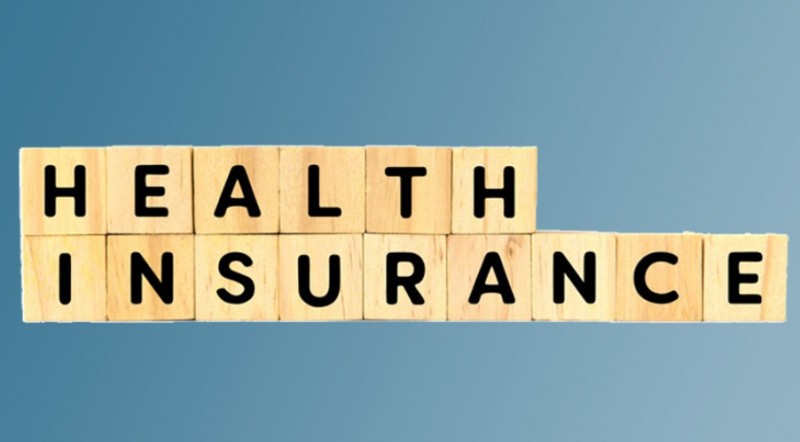
Claim settlement for a health insurance plan can either be on a cashless basis or a reimbursement basis. With the rising cost of medical expenses and pandemics like COVID expected to reoccur, cashless health insurance has gained importance. Medical emergencies can strike at any time, and cashless health insurance is often a boon in such perilous times.In the case of a cashless health insurance plan, the insured need not pay for the medical bills that are covered under the health insurance policy, at the hospital, and the insurance provider directly settles the bill with the hospital.
Often policyholders avail themselves of a health insurance plan, especially for the cashless claim facility that comes with it. Cashless health insurance plans not only cover medical emergencies but also planned hospitalizations. Its convenience is unmatched, as one need not run around making financial arrangements. Moreover, out-of-pocket expenditure in India is as high as 62% of healthcare expenses (Source: IRDAI). Hence, the importance of cashless health insurance cannot be overstated in India.
While cashless health insurance settlement is not a difficult process, to ensure the smooth settlement of your cashless health insurance plan, follow the steps below:
Identify a network hospital: In a cashless health insurance plan, the insurer directly settles all your bills with the hospital itself. Hence, all insurance companies have tie-ups with various hospitals throughout the country. To identify a network hospital, either check your policy document or simply go to the website of your insurance provider.
The insurance company’s websites generally mention a list of network hospitals for cashless health insurance. Simply choose a hospital that is nearby or is the most convenient for you.
Inform the insurer or the third-party administrator (TPA): The next step is to inform your insurer or TPA so that they can register your claim and then approve it. Medical admissions to hospitals can be planned or can be out of an emergency.
Planned hospitalisation: If the hospitalisation is planned, make sure you let your insurance provider know about it at least a week in advance. Share all the requisite medical documents and doctor’s prescriptions with them. Ensure you obtain a consent letter from the insurance provider for cashless hospitalisation.
Emergency hospitalisation: In case of hospitalisation due to any emergency, ensure that you notify your insurance provider or TPA within 24 hours of admitting the patient.
You need to fill out a "pre-authorisation claim form." You can get this form directly from the insurance company or download it from their website or get it directly from the hospital. This form is the basis for the approval of your claim.
Know about room-rent capping:
Your health insurance plan may contain a room-rent capping clause. It means that your room rent would be covered under the health insurance plan only up to a certain amount. This limit could be in absolute figures, say Rs 3,000 per day, or in a percentage value of the total sum assured. If the hospital where you choose to be treated charges a higher fee, you will be responsible for the difference. Hence, it is important that you are aware of any such provision in your health insurance plan.
Be aware of exclusions and co-pay clauses:
Health insurance plans often come with certain exclusions. These exclusions could range from pre-existing medical conditions, mental illness, cosmetic treatments, registration charges, and the costs of disposables used. Make sure you know these exclusions. In the event you raise a claim for any such matter, it will be rejected.
You should also be aware of the co-pay clause. As per this clause, you will have to pay a certain portion of the medical expenses. Make sure that you are aware of it so that you are able to pay the required amount at the time of bill settlement.
Have your identity proof and policy documents handy:
It is important that you have your insurance card and insurance policy document with you. Also, ensure that you have your identity-proof documents, like your Aadhaar card or PAN card, with you. These are crucial documents that you will require at the time of hospitalisation. After that, it is mostly the TPA that takes care of the paperwork. Here is a checklist of the most important documents that you definitely require:
. KYC proof like an Aadhaar card
. Health insurance policy and card
. Claim pre-authorization form completely filled and signed
. Doctor report/recommendation for hospitalization, different tests, etc.
In the event of a medical emergency, cashless health insurance provides much-needed protection. The key is to choose the right health insurance plan. If you take care of all the above considerations, your cashless health insurance settlement will take place smoothly. It will minimize the chances of your claim being rejected. In case you face any issues, simply get in touch with your insurer.
Disclaimer: The above information is for illustrative purposes only. For more details, please refer to the policy wordings and prospectus before concluding the sales.
Biden underwent removal of a cancerous skin lesion in February